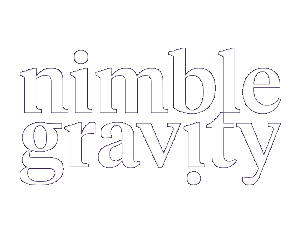Últimamente hemos estado ayudando a empresas a optimizar sus operaciones de servicio al cliente utilizando IA Generativa para equilibrar la atención personalizada con la eficiencia. Muchas compañías aún se enfocan en automatizar tareas manuales, y eso es un punto de partida totalmente válido. Pero existe una gran oportunidad de ir más allá y usar la IA para realmente potenciar el servicio al cliente.
La Evolución de la IA en el Servicio al Cliente
En sus primeras etapas, las empresas recurrieron a la automatización principalmente para reducir el trabajo repetitivo. Tareas como dirigir tickets, responder preguntas frecuentes o emitir reembolsos básicos se volvieron más fáciles gracias a bots y sistemas basados en reglas. Solo eso ya aportaba valor.
Pero con el auge de la IA Generativa, estamos entrando en una nueva era: una en la que la IA no solo sigue reglas, sino que realmente ayuda a entender, aprender y guiar mejores experiencias para el cliente. Ya no se trata solo de reducir tickets, sino de ofrecer un soporte más inteligente, rápido y personalizado.
Descubriendo Insights a partir de las Conversaciones con Clientes
La IA Generativa puede analizar interacciones de clientes a través de correo electrónico, chat y teléfono para detectar patrones y entender qué necesitan. Esto va mucho más allá de identificar palabras clave. Estamos hablando de:
- Entender la intención
- Detectar el tono y el sentimiento
- Identificar problemas comunes en múltiples canales
- Recomendar soluciones basadas en resultados históricos
Estos insights permiten que los equipos de soporte no solo reaccionen de forma más efectiva, sino que también anticipen las necesidades del cliente—un cambio de juego tanto para la satisfacción como para la eficiencia operativa.
Por Qué Unificar los Datos del Cliente No Es Opcional
Un elemento básico clave para que todo esto funcione es reunir todos los datos del cliente en un solo lugar. Si la información está dispersa, la IA no puede ofrecer una visión completa. Consolidarla es el primer paso para obtener esos insights valiosos que ayudan a tu equipo a ofrecer mejores experiencias.
Cuando la IA tiene acceso a perfiles completos del cliente—incluyendo historial de interacciones, preferencias, uso del producto y problemas pasados—su capacidad se multiplica. Ese contexto le permite:
- Ofrecer recomendaciones más precisas
- Personalizar las respuestas
- Detectar clientes en riesgo o oportunidades de venta adicional
En otras palabras, buenos datos alimentan una gran IA.
Potenciando a tu Equipo con Herramientas Impulsadas por IA
Otra lección que hemos aprendido es que los equipos de servicio al cliente deberían explorar cómo su software de help desk utiliza IA. Cuando comprenden las funciones de IA que ya están integradas en sus herramientas—y las combinan con los datos del cliente—pueden tomar decisiones más rápidas e inteligentes. No se trata solo de responder más rápido, sino de saber qué necesita el cliente antes de que lo pida.
Hoy en día, muchas plataformas ofrecen sugerencias basadas en IA, traducción en tiempo real, enrutamiento predictivo y resúmenes automáticos. Pero si el equipo no está capacitado para usarlas bien, esas funciones no darán todo su valor.
Los líderes de soporte al cliente deberían invertir tiempo en:
- Conocer las funciones de IA disponibles en su stack tecnológico
- Capacitar al personal para saber cuándo y cómo usarlas
- Fomentar retroalimentación de los agentes sobre cómo mejorar los resultados
Cuando estas herramientas se combinan con datos limpios y centralizados, su efectividad aumenta exponencialmente.
Guía para Aprovechar al Máximo la IA Generativa en el Servicio al Cliente
Si quieres sacar el mayor provecho de la IA Generativa en el servicio al cliente, aquí tienes una guía sencilla:
1. Automatiza lo Simple: Si aún estás manejando manualmente correos entrantes, chats web o notificaciones de portales de clientes, consulta a expertos como Nimble Gravity para ayudarte a automatizar esos procesos. Las tareas repetitivas y de alto volumen son ideales para obtener victorias rápidas con IA.
2. Consolida los Datos: Muchas empresas tienen datos de cuentas en ERPs, software de soporte, CRMs y otros sistemas. Crea o utiliza un data lake para construir una vista amplia del cliente. Esto no solo mejora la IA, sino que también beneficia la colaboración entre equipos.
3. Explora Oportunidades: Reflexiona sobre cómo la IA Generativa puede mejorar tu servicio al cliente y hacer tus operaciones más fluidas. ¿Qué partes del recorrido del cliente se podrían optimizar? ¿Dónde pasa más tiempo tu equipo hoy?
4. Integra la IA en tu Stack Existente: Asegúrate de que tu equipo entienda las herramientas de IA Generativa que ofrece su software de help desk e integra los datos consolidados para que los sistemas funcionen al máximo. Este paso suele requerir apoyo tanto de IT como de operaciones.
5. Optimiza e Itera: Usa los insights generados por IA para ajustar tus estrategias y mejorar los resultados para tus clientes. Mide continuamente el impacto con métricas como tiempo de resolución, CSAT (satisfacción del cliente) y costo por ticket.
Está Bien Comenzar con Poco—Pero No Te Quedes Ahí
Lo entendemos: muchas empresas todavía están en proceso de automatizar funciones básicas, y eso está bien. Pero dar el siguiente paso para integrar la IA es donde ocurre la verdadera magia. Le permite a tu equipo enfocarse en lo que realmente importa: construir relaciones y resolver problemas complejos de los clientes.
La IA no está aquí para reemplazar al servicio humano, sino para potenciarlo. Y las empresas que adopten esa mentalidad no solo ofrecerán mejor soporte, sino que también cultivarán una lealtad más profunda en sus clientes.
{{cta('174417875352')}}




